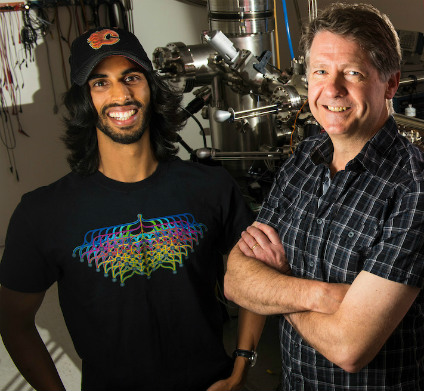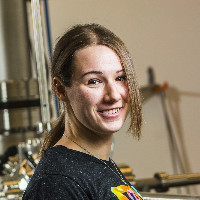This is a scattering of events, which I’m sure will be augmented as we properly start the month of October 2019.
October 2, 2019 in Waterloo, Canada (Perimeter Institute)
If you want to be close enough to press the sacred flesh (Sir Martin Rees), you’re out of luck. However, there are still options ranging from watching a live webcast from the comfort of your home to watching the lecture via closed circuit television with other devoted fans at a licensed bistro located on site at the Perimeter Institute (PI) to catching the lecture at a later date via YouTube.
That said, here’s why you might be interested,
Here’s more from a September 11, 2019 Perimeter Institute (PI) announcement received via email,
Surviving the Century
MOVING TOWARD A POST-HUMAN FUTURE
Martin Rees, UK Astronomer Royal
Wednesday, Oct. 2 at 7:00 PM ETAdvances in technology and space exploration could, if applied wisely, allow a bright future for the 10 billion people living on earth by the end of the century.
But there are dystopian risks we ignore at our peril: our collective “footprint” on our home planet, as well as the creation and use of technologies so powerful that even small groups could cause a global catastrophe.
Martin Rees, the UK Astronomer Royal, will explore this unprecedented moment in human history during his lecture on October 2, 2019. A former president of the Royal Society and master of Trinity College, Cambridge, Rees is a cosmologist whose work also explores the interfaces between science, ethics, and politics. Read More.
Mark your calendar! Tickets will be available on Monday, Sept. 16 at 9 AM ET
Didn’t get tickets for the lecture? We’ve got more ways to watch.
Join us at Perimeter on lecture night to watch live in the Black Hole Bistro.
Catch the live stream on Inside the Perimeter or watch it on Youtube the next day
Become a member of our donor thank you program! Learn more.
It took me a while to locate an address for PI venue since I expect that information to be part of the announcement. (insert cranky emoticon here) Here’s the address: Perimeter Institute, Mike Lazaridis Theatre of Ideas, 31 Caroline St. N., Waterloo, ON
Before moving onto the next event, I’m including a paragraph from the event description that was not included in the announcement (from the PI Outreach Surviving the Century webpage),
In his October 2 [2019] talk – which kicks off the 2019/20 season of the Perimeter Institute Public Lecture Series – Rees will discuss the outlook for humans (or their robotic envoys) venturing to other planets. Humans, Rees argues, will be ill-adapted to new habitats beyond Earth, and will use genetic and cyborg technology to transform into a “post-human” species.
I first covered Sir Martin Rees and his concerns about technology (robots and cyborgs run amok) in this November 26, 2012 posting about existential risk. He and his colleagues at Cambridge University, UK, proposed a Centre for the Study of Existential Risk, which opened in 2015.
Straddling Sept. and Oct. at the movies in Vancouver
The Vancouver International Film Festival (VIFF) opened today, September 26, 2019. During its run to October 11, 2019 there’ll be a number of documentaries that touch on science. Here are three of the documentaries most closely adhere to the topics I’m most likely to address on this blog. There is a fourth documentary included here as it touches on ecology in a more hopeful fashion than is the current trend.
Human Nature
From the VIFF 2019 film description and ticket page,
One of the most significant scientific breakthroughs in history, the discovery of CRISPR has made it possible to manipulate human DNA, paving the path to a future of great possibilities.
The implications of this could mean the eradication of disease or, more controversially, the possibility of genetically pre-programmed children.
Breaking away from scientific jargon, Human Nature pieces together a complex account of bio-research for the layperson as compelling as a work of science-fiction. But whether the gene-editing powers of CRISPR (described as “a word processor for DNA”) are used for good or evil, they’re reshaping the world as we know it. As we push past the boundaries of what it means to be human, Adam Bolt’s stunning work of science journalism reaches out to scientists, engineers, and people whose lives could benefit from CRISPR technology, and offers a wide-ranging look at the pros and cons of designing our futures.
…
Tickets
Friday, September 27, 2019 at 11:45 AM
Vancity Theatre
Saturday, September 28, 2019 at 11:15 AM
International Village 10
Thursday, October 10, 2019 at 6:45 PM
SFU Goldcorp
According to VIFF, the tickets for the Sept. 27, 2019 show are going fast.
Resistance Fighters
From the VIFF 2019 film description and ticket page,
Since mass-production in the 1940s, antibiotics have been nothing less than miraculous, saving countless lives and revolutionizing modern medicine. It’s virtually impossible to imagine hospitals or healthcare without them. But after years of abuse and mismanagement by the medical and agricultural communities, superbugs resistant to antibiotics are reaching apocalyptic proportions. The ongoing rise in multi-resistant bacteria – unvanquishable microbes, currently responsible for 700,000 deaths per year and projected to kill 10 million yearly by 2050 if nothing changes – and the people who fight them are the subjects of Michael Wech’s stunning “science-thriller.”
Peeling back the carefully constructed veneer of the medical corporate establishment’s greed and complacency to reveal the world on the cusp of a potential crisis, Resistance Fighters sounds a clarion call of urgency. It’s an all-out war, one which most of us never knew we were fighting, to avoid “Pharmageddon.” Doctors, researchers, patients, and diplomats testify about shortsighted medical and economic practices, while Wech offers refreshingly original perspectives on environment, ecology, and (animal) life in general. As alarming as it is informative, this is a wake-up call the world needs to hear.
…
Sunday, October 6, 2019 at 5:45 PM
International Village 8
Thursday, October 10, 2019 at 2:15 PM
SFU Goldcorp
According to VIFF, the tickets for the Oct. 6, 2019 show are going fast.
Trust Machine: The Story of Blockchain
Strictly speaking this is more of a technology story than science story but I have written about blockchain and cryptocurrencies before so I’m including this. From the VIFF 2019 film description and ticket page,
For anyone who has questions about cryptocurrencies like Bitcoin (and who doesn’t?), Alex Winter’s thorough documentary is an excellent introduction to the blockchain phenomenon. Trust Machine offers a wide range of expert testimony and a variety of perspectives that explicate the promises and the risks inherent in this new manifestation of high-tech wizardry. And it’s not just money that blockchains threaten to disrupt: innovators as diverse as UNICEF and Imogen Heap make spirited arguments that the industries of energy, music, humanitarianism, and more are headed for revolutionary change.
A propulsive and subversive overview of this little-understood phenomenon, Trust Machine crafts a powerful and accessible case that a technologically decentralized economy is more than just a fad. As the aforementioned experts – tech wizards, underground activists, and even some establishment figures – argue persuasively for an embrace of the possibilities offered by blockchains, others criticize its bubble-like markets and inefficiencies. Either way, Winter’s film suggests a whole new epoch may be just around the corner, whether the powers that be like it or not.
…
Tuesday, October 1, 2019 at 11:00 AM
Vancity Theatre
Thursday, October 3, 2019 at 9:00 PM
Vancity Theatre
Monday, October 7, 2019 at 1:15 PM
International Village 8
According to VIFF, tickets for all three shows are going fast
The Great Green Wall
For a little bit of hope, From the VIFF 2019 film description and ticket page,
“We must dare to invent the future.” In 2007, the African Union officially began a massively ambitious environmental project planned since the 1970s. Stretching through 11 countries and 8,000 km across the desertified Sahel region, on the southern edges of the Sahara, The Great Green Wall – once completed, a mosaic of restored, fertile land – would be the largest living structure on Earth.
Malian musician-activist Inna Modja embarks on an expedition through Senegal, Mali, Nigeria, Niger, and Ethiopia, gathering an ensemble of musicians and artists to celebrate the pan-African dream of realizing The Great Green Wall. Her journey is accompanied by a dazzling array of musical diversity, celebrating local cultures and traditions as they come together into a community to stand against the challenges of desertification, drought, migration, and violent conflict.
An unforgettable, beautiful exploration of a modern marvel of ecological restoration, and so much more than a passive source of information, The Great Green Wall is a powerful call to take action and help reshape the world.
…
Sunday, September 29, 2019 at 11:15 AM
International Village 10
Wednesday, October 2, 2019 at 6:00 PM
International Village 8
Standby – advance tickets are sold out but a limited number are likely to be released at the doorWednesday, October 9, 2019 at 11:00 AM
International Village 9
As you can see, one show is already offering standby tickets only and the other two are selling quickly.
For venue locations, information about what ‘standby’ means and much more go here and click on the Festival tab. As for more information the individual films, you’ll links to trailers, running times, and more on the pages for which I’ve supplied links.
Brain Talks on October 16, 2019 in Vancouver
From time to time I get notices about a series titled Brain Talks from the Dept. of Psychiatry at the University of British Columbia. A September 11, 2019 announcement (received via email) focuses attention on the ‘guts of the matter’,
YOU ARE INVITED TO ATTEND:
BRAINTALKS: THE BRAIN AND THE GUT
WEDNESDAY, OCTOBER 16TH, 2019 FROM 6:00 PM – 8:00 PM
Join us on Wednesday October 16th [2019] for a series of talks exploring the
relationship between the brain, microbes, mental health, diet and the
gut. We are honored to host three phenomenal presenters for the evening:
Dr. Brett Finlay, Dr. Leslie Wicholas, and Thara Vayali, ND.
DR. BRETT FINLAY [2] is a Professor in the Michael Smith Laboratories at
the University of British Columbia. Dr. Finlay’s research interests are
focused on host-microbe interactions at the molecular level,
specializing in Cellular Microbiology. He has published over 500 papers
and has been inducted into the Canadian Medical Hall of Fame. He is the
co-author of the books: Let Them Eat Dirt and The Whole Body
Microbiome.
DR. LESLIE WICHOLAS [3] is a psychiatrist with an expertise in the
clinical understanding of the gut-brain axis. She has become
increasingly involved in the emerging field of Nutritional Psychiatry,
exploring connections between diet, nutrition, and mental health.
Currently, Dr. Wicholas is the director of the Food as Medicine program
at the Mood Disorder Association of BC.
THARA VAYALI, ND [4] holds a BSc in Nutritional Sciences and a MA in
Education and Communications. She has trained in naturopathic medicine
and advocates for awareness about women’s physiology and body literacy.
Ms. Vayali is a frequent speaker and columnist that prioritizes
engagement, understanding, and community as pivotal pillars for change.
Our event on Wednesday, October 16th [2019] will start with presentations from
each of the three speakers, and end with a panel discussion inspired by
audience questions. After the talks, at 7:30 pm, we host a social
gathering with a rich spread of catered healthy food and non-alcoholic
drinks. We look forward to seeing you there!
Paetzhold Theater
Vancouver General Hospital; Jim Pattison Pavilion, Vancouver, BC
That’s it for now.

